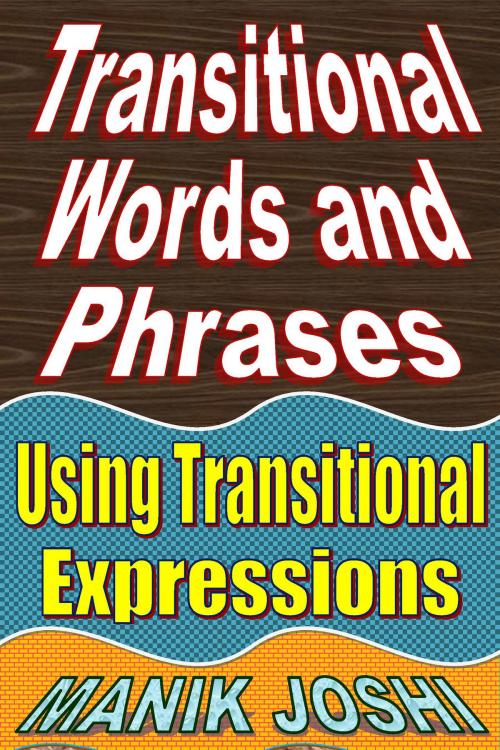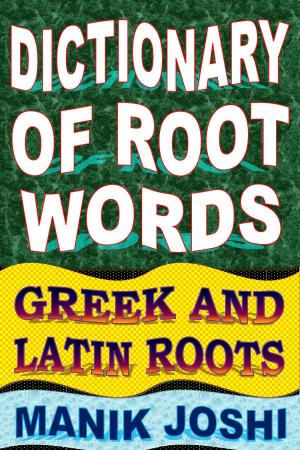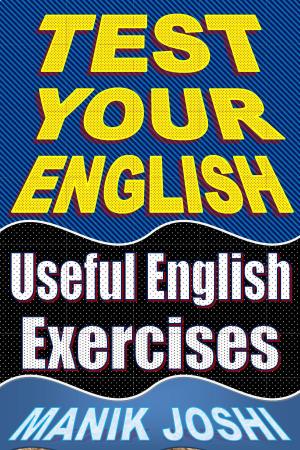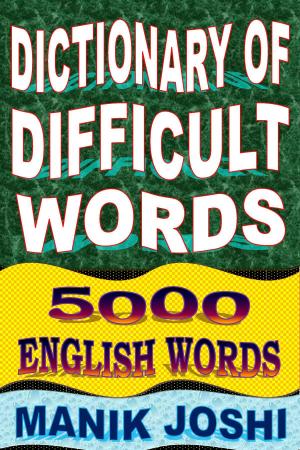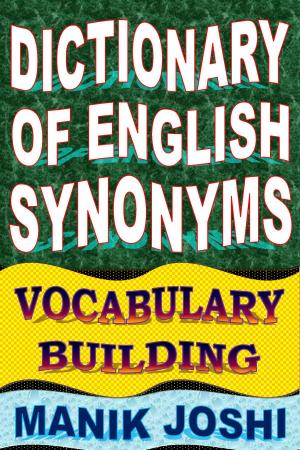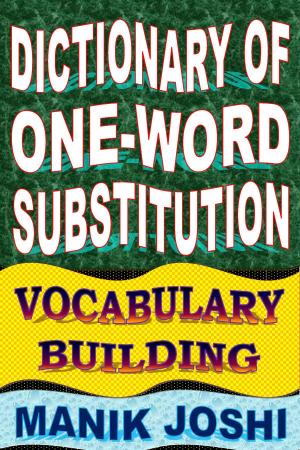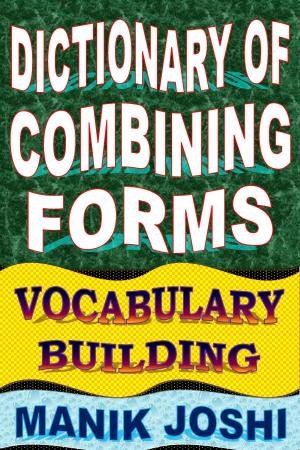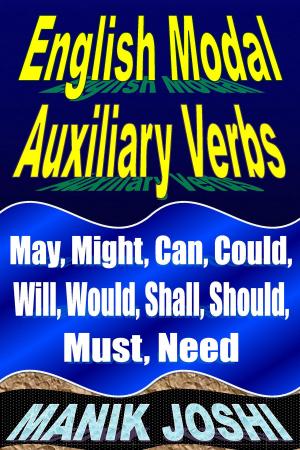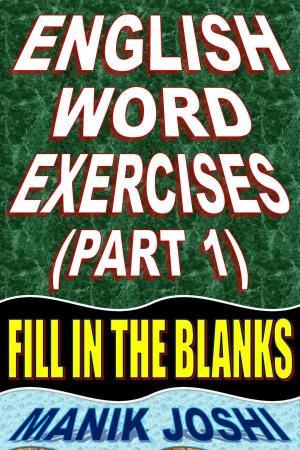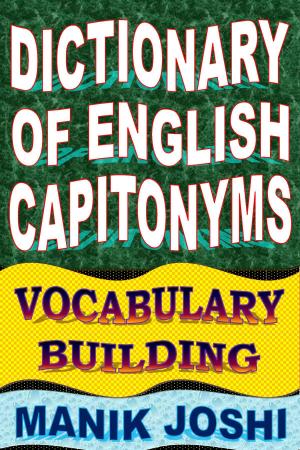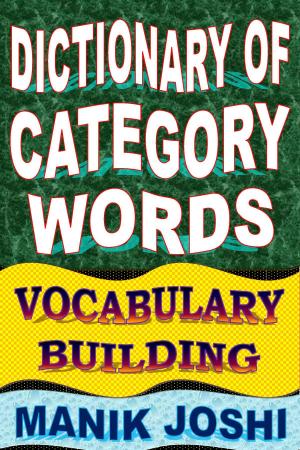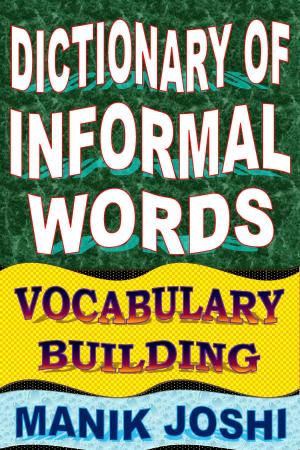Transitional Words and Phrases: Using Transitional Expressions
Nonfiction, Reference & Language, Study Aids, ESL, Education & Teaching, Educational Theory, Foreign Languages| Author: | Manik Joshi | ISBN: | 9781311470119 |
| Publisher: | Manik Joshi | Publication: | August 23, 2016 |
| Imprint: | Smashwords Edition | Language: | English |
| Author: | Manik Joshi |
| ISBN: | 9781311470119 |
| Publisher: | Manik Joshi |
| Publication: | August 23, 2016 |
| Imprint: | Smashwords Edition |
| Language: | English |
This Book Covers the Following Topics:
Transitional Expressions -- Definition
Transitional Expressions – Punctuation Rules
01. Transitional Expressions -- Addition
02. Transitional Expressions -- Cause and Effect
03. Transitional Expressions -- Concession
04. Transitional Expressions -- Condition
05. Transitional Expressions -- Consequence
06. Transitional Expressions -- Contrast
07. Transitional Expressions -- Dismissal
08. Transitional Expressions -- Illustration
09. Transitional Expressions -- Emphasis
10. Transitional Expressions -- Exception
11. Transitional Expressions -- Explanation
12. Transitional Expressions -- Generalization
13. Transitional Expressions -- Location
14. Transitional Expressions -- Purpose
15. Transitional Expressions -- Quantifier
16. Transitional Expressions -- Reference
17. Transitional Expressions -- Sequence
18. Transitional Expressions – Similarity
19. Transitional Expressions -- Summary
20. Transitional Expressions -- Time
Exercise: 1(A) and 1(B)
Exercise: 2(A) to 2(C)
SAMPLE THIS:
Transitional Expressions -- Definition
Meaning of ‘Transition’ -- to go from one point to another
“Transitional Expressions” = “Transitional Words” + “Transitional Phrases”
“Transitional (or Transition) Words” are also known as “connecting words”, “linking words” or “signal words“
“Transitional (or Transition) Phrases” are also known as “connecting phrases”, “linking phrases” or “signal phrases“
“Transitional Expressions” (also “Transitions”) could be defined as follows:
•‘Transitional expressions’ are words or phrases that provide bridges between sentences, parts of sentences, paragraphs and sections.
•‘Transitional expressions’ connect and relate sentences and paragraphs.
•‘Transitions expressions’ signal the relationship between sentences and paragraphs.
•‘Transitions expressions’ state the connections between ideas.
•‘Transitions expressions’ help carry over a thought from one part of a sentence to another, from one sentence to another, from one paragraph to another, from one section to another, or from one idea to another.
•‘Transitional expressions’ connect ideas from sentence to sentence and paragraph to paragraph.
•‘Transitional expressions’ are placed in the beginning, middle, or end of the sentences/paragraphs to explain connections between two or more ideas.
•‘Transitional expressions’ help carry over a thought from one idea to another.
•‘Transitional expressions’ produce clearer expression, by eliminating the excessive use of such words as ‘and’, ‘but’, ‘for’ ‘nor’, ‘or’ ‘so’ ‘yet’, etc.
Choosing Transitional Expression --
Some transitional words and transitional phrases belong to more than one category. A transitional expression can change the whole meaning of a sentence. Therefore, you should choose the transition that best conveys your meaning. You should also avoid repetition and use different transition words or phrases in the same category if necessary.
Placing transitional words:
There are three options for placing transitional words:
• The beginning of a sentence [Most common]
• The middle of a sentence
• The end of a sentence [Least Common]
Example:
Their products come with an insurance pack that covers accidental damage, theft, and breakage for a year. Furthermore, customers can also avail for an additional year of warranty. [Use of transitional word ‘furthermore’ at the beginning of a sentence]
Their products come with an insurance pack that covers accidental damage, theft, and breakage for a year. Customers, furthermore, can also avail for an additional year of warranty. [Use of transitional word ‘furthermore’ in the middle of a sentence]
Their products come with an insurance pack that covers accidental damage, theft, and breakage for a year. Customers can also avail for an additional year of warranty, furthermore. [Use of transitional word ‘furthermore’ in the end of a sentence]
This Book Covers the Following Topics:
Transitional Expressions -- Definition
Transitional Expressions – Punctuation Rules
01. Transitional Expressions -- Addition
02. Transitional Expressions -- Cause and Effect
03. Transitional Expressions -- Concession
04. Transitional Expressions -- Condition
05. Transitional Expressions -- Consequence
06. Transitional Expressions -- Contrast
07. Transitional Expressions -- Dismissal
08. Transitional Expressions -- Illustration
09. Transitional Expressions -- Emphasis
10. Transitional Expressions -- Exception
11. Transitional Expressions -- Explanation
12. Transitional Expressions -- Generalization
13. Transitional Expressions -- Location
14. Transitional Expressions -- Purpose
15. Transitional Expressions -- Quantifier
16. Transitional Expressions -- Reference
17. Transitional Expressions -- Sequence
18. Transitional Expressions – Similarity
19. Transitional Expressions -- Summary
20. Transitional Expressions -- Time
Exercise: 1(A) and 1(B)
Exercise: 2(A) to 2(C)
SAMPLE THIS:
Transitional Expressions -- Definition
Meaning of ‘Transition’ -- to go from one point to another
“Transitional Expressions” = “Transitional Words” + “Transitional Phrases”
“Transitional (or Transition) Words” are also known as “connecting words”, “linking words” or “signal words“
“Transitional (or Transition) Phrases” are also known as “connecting phrases”, “linking phrases” or “signal phrases“
“Transitional Expressions” (also “Transitions”) could be defined as follows:
•‘Transitional expressions’ are words or phrases that provide bridges between sentences, parts of sentences, paragraphs and sections.
•‘Transitional expressions’ connect and relate sentences and paragraphs.
•‘Transitions expressions’ signal the relationship between sentences and paragraphs.
•‘Transitions expressions’ state the connections between ideas.
•‘Transitions expressions’ help carry over a thought from one part of a sentence to another, from one sentence to another, from one paragraph to another, from one section to another, or from one idea to another.
•‘Transitional expressions’ connect ideas from sentence to sentence and paragraph to paragraph.
•‘Transitional expressions’ are placed in the beginning, middle, or end of the sentences/paragraphs to explain connections between two or more ideas.
•‘Transitional expressions’ help carry over a thought from one idea to another.
•‘Transitional expressions’ produce clearer expression, by eliminating the excessive use of such words as ‘and’, ‘but’, ‘for’ ‘nor’, ‘or’ ‘so’ ‘yet’, etc.
Choosing Transitional Expression --
Some transitional words and transitional phrases belong to more than one category. A transitional expression can change the whole meaning of a sentence. Therefore, you should choose the transition that best conveys your meaning. You should also avoid repetition and use different transition words or phrases in the same category if necessary.
Placing transitional words:
There are three options for placing transitional words:
• The beginning of a sentence [Most common]
• The middle of a sentence
• The end of a sentence [Least Common]
Example:
Their products come with an insurance pack that covers accidental damage, theft, and breakage for a year. Furthermore, customers can also avail for an additional year of warranty. [Use of transitional word ‘furthermore’ at the beginning of a sentence]
Their products come with an insurance pack that covers accidental damage, theft, and breakage for a year. Customers, furthermore, can also avail for an additional year of warranty. [Use of transitional word ‘furthermore’ in the middle of a sentence]
Their products come with an insurance pack that covers accidental damage, theft, and breakage for a year. Customers can also avail for an additional year of warranty, furthermore. [Use of transitional word ‘furthermore’ in the end of a sentence]
